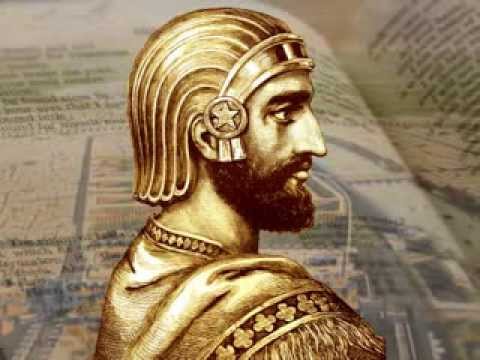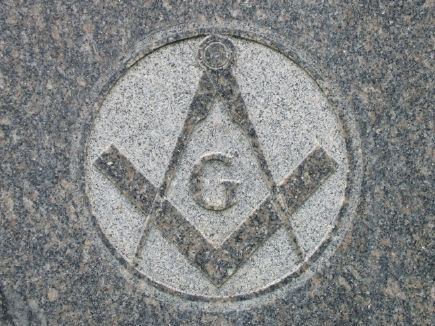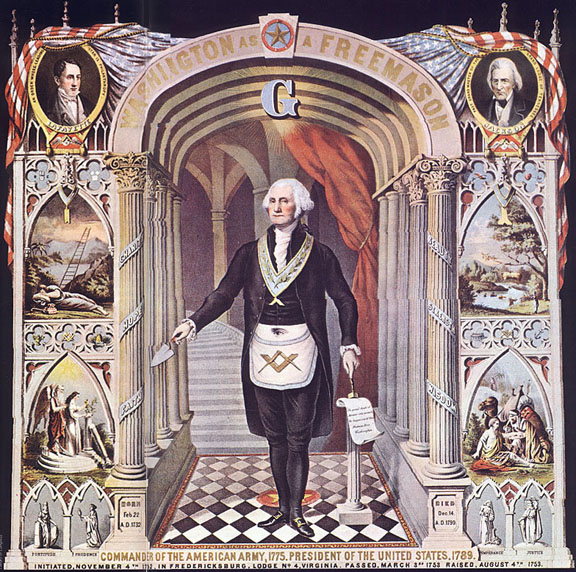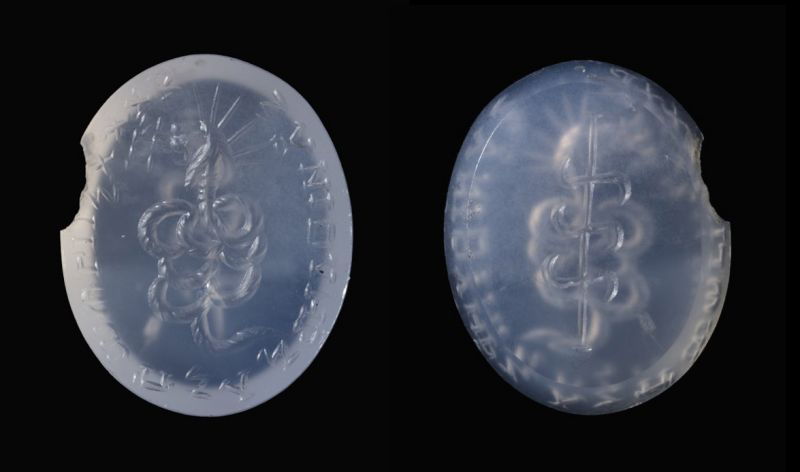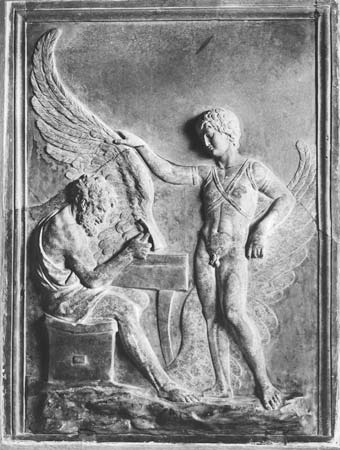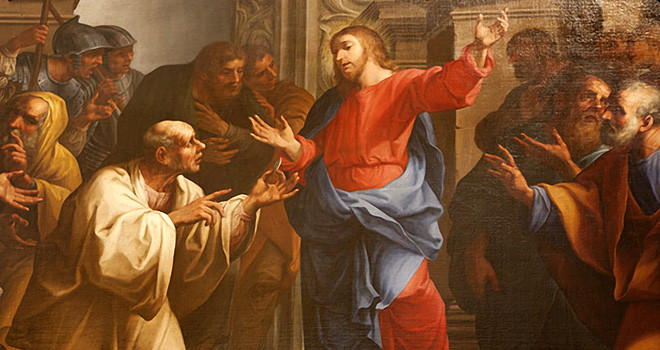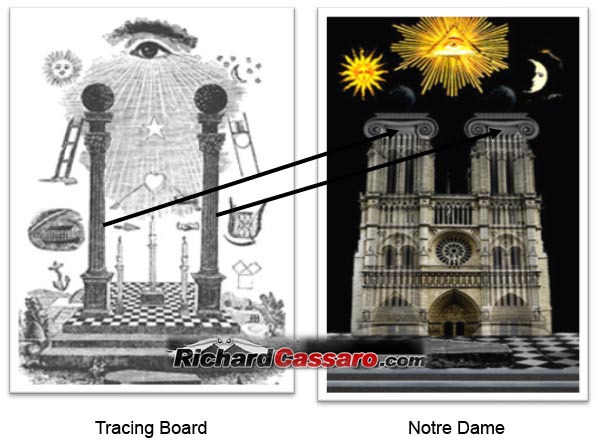Located on the Eastern side of the island Crete in Greece near the port of Saint Nicholas (Agios Nikolaos or Aghios Nikolaos), is the quaint city Elounda (Greek: Ελούντα, romanized: Elúnda, Elunda, Elunta) situated around a beautiful deep blue lake that is a hundred feet deep, and more than a quarter of a mile diameter in what looks like the crater of an old volcano. Not many people know that it was once known as one of Greece’s strongest and most famous ancient towns.

Full of ruins of great age, this is a place where Biblical prophets and the first eminent Freemasons such as Dadleus once walked amongst the old stones now mixed in with modern villas, attractions, and quaint eateries that are some of the most esteemed in all of Greece. The importance of this city is relayed to us in Greek mythology with the story of Tyros or Tyro who was the Goddess-mother of the Tyrians (Tyrrhenians or Tyrsenians) whose father was named Cretheus (Crete) along with Sidero (Sidon), and Eolus, who are credited as the founders of cities in Hellas.
Buried beneath the modern town and mythology, you will find that this location as a hidden history and like many other Cretan cities, it has been known by a plethora of names over the last two thousand years. I have found that it was known as the ancient city of Goulas but was also spelled Olous, Oloundas, and Eloundas. These names reconcile with the mythology of Tyros. Digging further, I discovered that this same city may have also been called Lyctus, Lyttos, or Lato depending on the writer and time.
These cities were said by many historians to have a wooden statue of Britomartis carved by the famous Knossian Mason, Daedalus. The best authorities on the wooden statue of Britomartis are Strabo and Pausanias. Strabo, in his Geography, said, “Lyktos (Lyctus) [in Krete] . . . the seaport is Kherronesos (Cherronesus), as it is called, where is the temple of Britomartis.” Pausanias, in the Description of Greece, mentions a wooden statue of Britomartis at OIus in Crete, along with a wooden Athena at Knossos.
The history I speak of can be found all over the ancient peaks of Elounda are ancient walls built of massive stones of the past, some well-preserved, others crumbling into the dust of time, as the feral olive trees of Abraham and countless wildflowers dot the landscape. The biblical and Masonic history of this town along with its association with Lato and Tyre as it is mentioned by many authors as “the great city of Goulas (Lato), dated to the prehistoric period and a massive stone entrance likened to the Lion Gate at Mycenae.” (1)
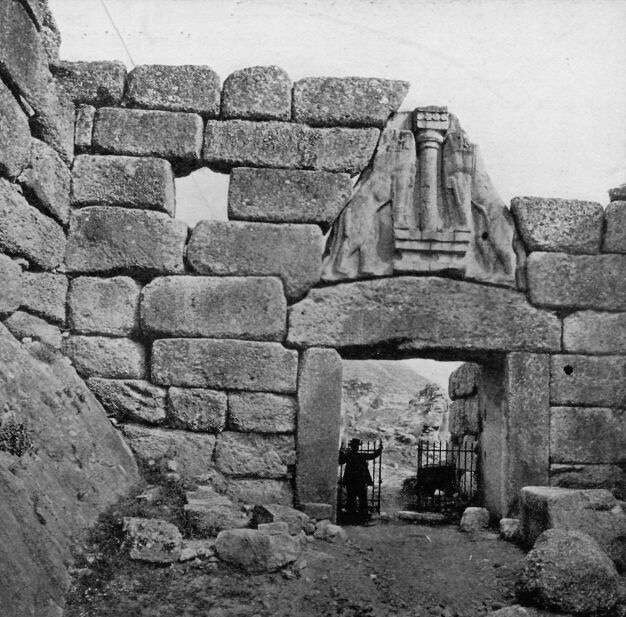
The people of Goulas (Olous, Oloundas, Eloundas) are sometimes referred to in literature as the Olotians or Oloutians and there was also a sanctuary here to Zeus where an inscription was found showing a decree inviting Knossos to arbitrate between Lato and Olous was set up”, and also a decree in honor of a physician from the island of Kasos, who had helped the Olontians in time of plague.
The English admiral who worked for the Royal Navy, Thomas Abel Brimage Spratt (11 May 1811 – 12 March 1888), associates Goulas with Lato who was in league with Pergamon in his work “, Travels in Crete”, published in 1865, Spratt said that he located the remains of the ancient city on the hill of Goulas, but wrongly identified them as the remains of Olous or Oleros. The archaeologists F. Halbherr, L. Mariani and A. Taramelli, visited the site and identified it as ancient Lato. As one of the hundred cities of Crete, Lato had eventually formed a league with Rhodes, Teos, and King Eumenes of Pergamon and participated in the League of the Cretan cities who all shared the same laws.
One of these names you will notice as being some of the 7 churches such as I have written before like the ancient Cretan city of Pergamon (Pergamum) which is first mentioned in history by Xenophon, and it becomes the center of importance when a Cretan King and friend of the Romans named Attalus (B.C. 241-197), and his son Eumenes (B.C. 196-159) had ruled over the city, schools, and church there. Pliny had called it, “longe clarissimum Asiae Pergamum.” Also, the place wrote about by Saint John in the Book of Revelation as the original uncorrupted church of Christ and one of the seven churches that later became the seat of Antichrist or Throne of Satan.
According to the Annual of the British School at Athens, “It may safely be said that of no prehistoric city on Hellenic soil are such extensive remains extant above ground as of the Cretan Goulas. The walls, indeed, are not so massive as those of Tiryns, there is no single monument to fix the attention like the Lions’ Gate at Mycenae, nor has excavation as yet done anything to add to what meets the eye on the surface of the earth. But for the mass of primeval ruins, the still-standing remains of individual dwelling-houses, the number of distinct quarters within the walls and the area they occupy, Goulas is without a rival. Its site, moreover, with its twin citadel peaks—the northern one looking down over a thousand feet sheer to the valley below—is more commanding than that of any sister city.” (2)
The American Journal of Archaeology, Volume 2; Volume 9 describes the excavations at Lato (Olous, Goulas, Oulas) in 1899-1900 where they found the temple of Zeus “at the north end a broad flight of steps led to the prytaneum, consisting of an inner room with a bench and altar, and an outer chamber which probably contained the sacred fire.” Researchers also discovered an important Biblical inscription is a treaty of the third century, between Gortyna and Lato, providing for a cessation of hostilities and the legal settlement of future disputes.
The author details his own observations of the massive Limestone Masonry found here was created with extraordinary difficulty resembling the Sixth or Mycenaean City of Troy. He had written;
“My own observations of the site of Goulas have been the result of three successive visits in 1894 and the two following years, and on each occasion, I was able to spend several days in exploring this almost inexhaustible maze of ruins. The principal discovery made by me on my first visit was the existence, in addition to the citadel height to the north mentioned by Spratt, of a second Akropolis to the South of the intervening hollow, and on the summit the remains of a very interesting building with a megaton recalling some of those of the Sixth or Mycenaean City of Troy.
In my next visit (1895), I was accompanied by Mr. J. L. Myres, and in the general plan opposite p. 194, which gives the first detailed view of Goulas as a whole, he has embodied the result of our joint labors. It must here be said that, from the vast masses of limestone blocks which encumber the ground, the tangled growth of brush-wood in their crevices, and the steepness of part of the site, the planning and measurement of the remains is a work of extraordinary difficulty, nor can anything more than approximate accuracy be claimed for the general result”
The coins that have been unearthed here are known as the “Coins of Olous” which were said to have been struck towards the latter part of the fourth century B.C., showing the head of Britomartis (Artemis) and on the reverse, a Freemasonic Square with what appears to be the letter G in the middle which is the oldest representation of Masonry on a coin that I could find anywhere.
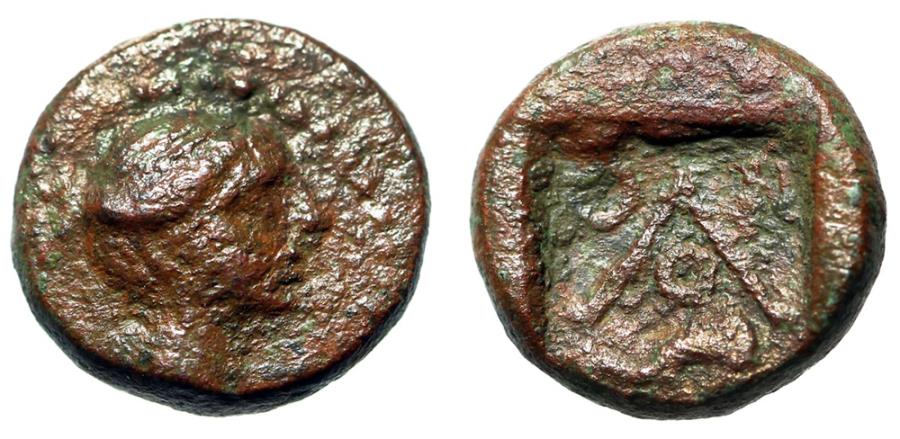
Other coins found here show Britomartis with her hair in the classic Hellenic fillet, bay-wreath, necklace and quiver, and as their reverse of the coin is Zeus enthroned with an eagle on his right hand, a scepter in his left (fig. 537)” and silver coins of Antiochos viii Grypos, king of Syria, dated between 12 I and 96 B.C., showing Zeus standing within a laurel-wreath holding a long scepter in his left hand, an eight-rayed star, in his right; and on or over his head is the crescent moon.
To go along with this fabulous history, more recently in October 2019, according to the Greek Ministry of Culture and Sports, archaeologists have discovered a treasure trove of artifacts dating back thousands of years near the Port of Saint Nicholas. (8) Here is a photo from of the submerged structures in the Vathi bay of the Kolokytha peninsula (photo: Greek Ministry of Culture and Sports)
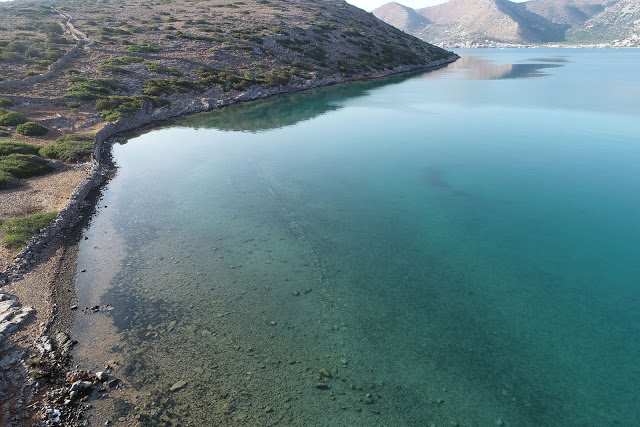
Άποψη των βυθισμένων δομών στον όρμο Βαθύ της χερσονήσου της Κολοκύθας
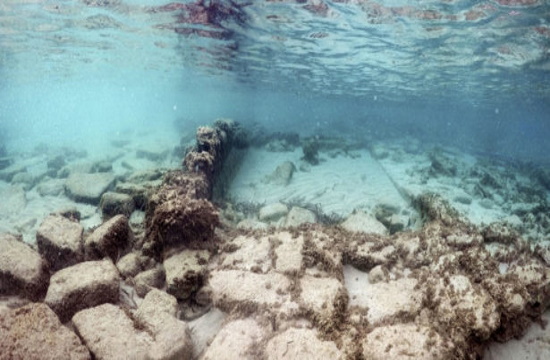
The online Greek publication, Tornos News recently reported that a treasure trove of submerged building complexes as well as ancient quarries, chiseled bollards, a loading platform, ships’ ballast, anchors, accidental rejects and signs of a Byzantine shipwreck were discovered by an underwater research team from the Ephorate of Underwater Antiquities and a team of geophysicists from the Laboratory of Satellite Remote Sensing of the Institute of Mediterranean Studies.
Archaeologists also found a submerged ancient city and the foundations of two fortification towers.
The research, carried out last October in much of Elounda Bay, involved volunteer divers and scientists of other specialties. This is the third research season in the five-year project of the two bodies launched in 2017 and supported by the Municipality of Agios Nikolaos. (4)
All these new findings seem to support the history of this ancient city whether it be true history, Biblical, and mythology that I have put forth in this essay.
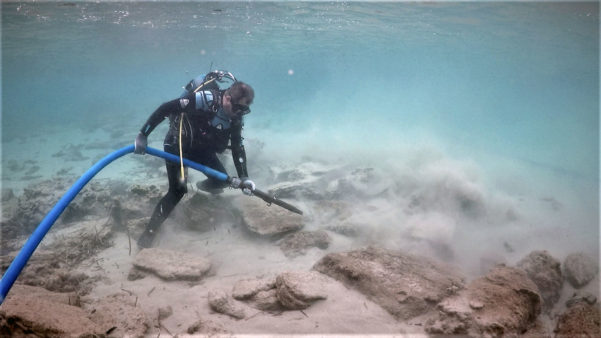
Cleaning part of the wall of ancient Oloundas (photo: Greek Ministry of Culture and Sports)
SOURCES:
1. Cretan Quests: British Explorers, Excavators and Historians Page 12 – Davina Huxley, British School at Athens – 2000
2. The Annual of the British School at Athens By British School at Athens
3. The American Journal of Archaeology, Volume 2; Volume 9
4. https://www.tornosnews.gr/en/greek-news/culture/38942-submerged-buildings-found-in-ancient-city-and-modern-luxury-resort-of-crete.html

Moe is the founder of GnosticWarrior.com. He is a father, husband, author, martial arts black belt, and an expert in Gnosticism, the occult, and esotericism.

